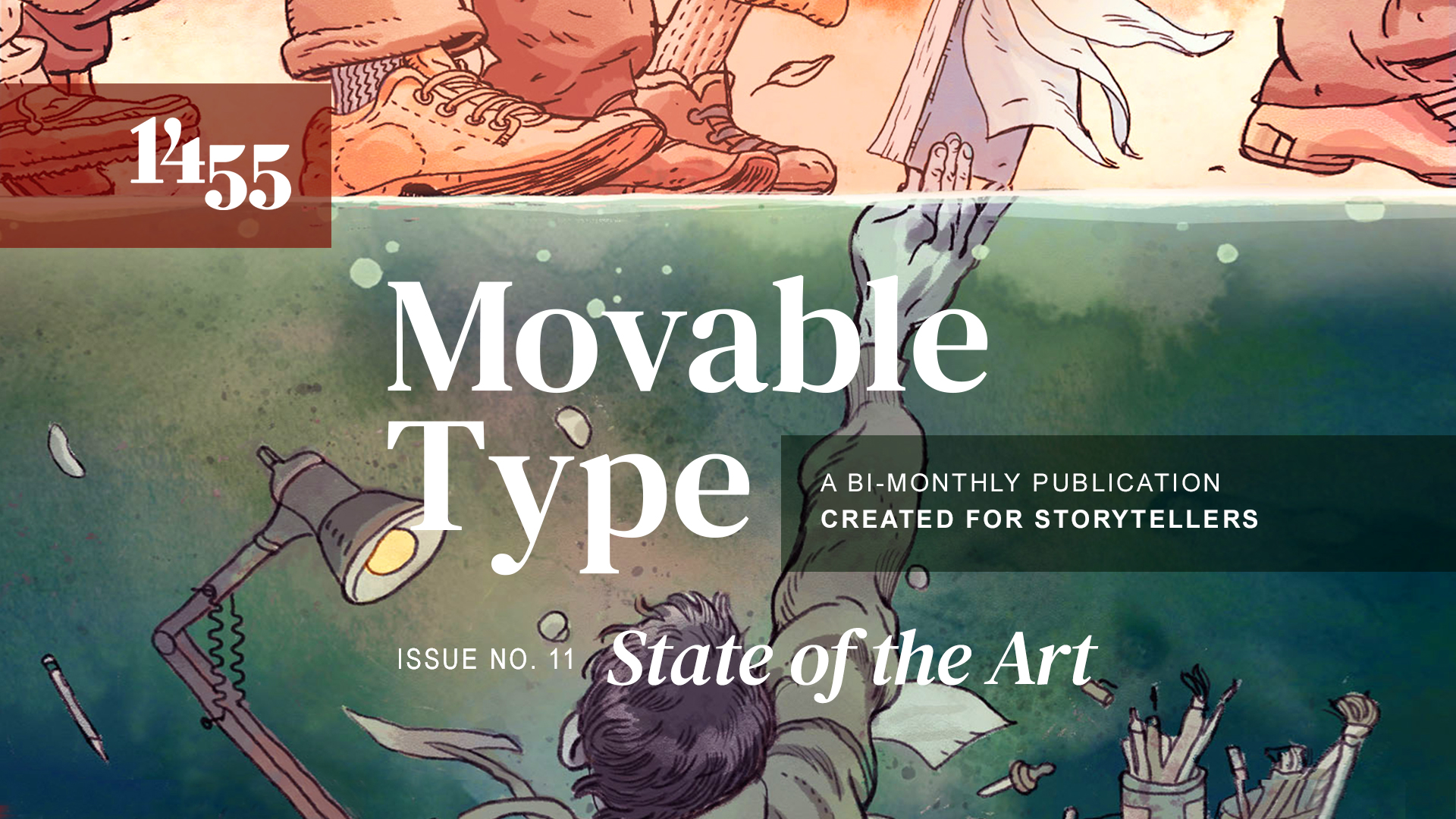Chuck Cascio
Emerging Thoughts from the
TRANSFORMING EDUCATION Series

When I started the “Transforming Education” series on my blog, my goal was simple: Cut through the empty political blather and share ideas and experiences from people who have actually devoted their lives to teaching, school administration, and education-reform initiatives. As a former teacher of 27 years at both the secondary school and university levels and as a former executive at two major education research/reform organizations, I knew this:
The reality that people inside schools experience daily is vastly different from the “experience” of people who push around political and/or personal agendas.
Inside any school building, where hundreds or thousands of youths move through various levels of maturation daily, there are multiple tensions, challenges, and, yes, rewards. Every teacher who is doing their job thoroughly is basically putting on approximately five hours of “shows” daily for youths whose brains and emotions are often pulled in many different directions. Administrators, counselors, and support staff are submerged in analyzing challenges and experiences that can help each individual child. And leaders in education reform organizations put their experiences on the ground-floor, searching for ways to help the daily challenges that their colleagues inside schools face.
These ground-floor experiences and the challenges that emerge from them are at the heart of education reform. That is not to say that political interest is not important—it is, for all the obvious reasons in American society today. But far too often, the political proposals and decisions are made without any realistic understanding of what goes into the exhausting day-to-day operations of educators. So I invited educators and education-reformers who have that ground-level reality to contribute to my ongoing series “Transforming Education” and they have responded—and continue to respond—with truly enlightening experiences, comments, and proposals that have the capability of making real change.
Here are some of the key thoughts summarized from their comments, but I urge all readers to go to my blog site to read their comments in depth…and to follow the series.
TAKEAWAY #1:
Grass-Roots Reform
The need for transformation is immediate and it must start at the grass-roots level, which means getting the input of teachers, administrators, and educational organizations. The ongoing conversation in the field has been overtaken by politicians and others who have little or no experience actually engaging in day-to-day learning activities. Nor have they spent significant time inside school buildings actually experiencing and analyzing the fundamentals of educational operations.
Every person contributing to the Transforming Educations series has had–and is having–those experiences.
Every person in this series knows what it is like to try to engage students in activities designed to help strengthen their self-image, to increase students’ understanding that the world extends far beyond their own daily lives, and to help students commit to increasing their knowledge—a process that has been passed down over centuries and continues to evolve. The experiences of the series are filled with levels of engagement that show the respondents’ awareness of how true education develops. From the heartbreaking racism some experienced to the realization that someone in a position of educational development actually believed in them, these educators show how their lives were changed.
Those lives were changed not through narrow-minded, empty rhetoric but through daily, minute-by-minute decisions made with the knowledge that the world is bigger than any one person. Through the comments of these committed educators, we see realistic actions that can be taken, but they are actions dedicated to making students aware that their lives are more than a simple ideology.
TAKEAWAY #2:
Students First
When a teacher or coach or counselor or administrator makes it a point to let students know that their lives and their intellect are meaningful and can be used for a greater good, those educators have a positive influence on countless lives. Unfortunately, respondents in the “Transforming Education” series have also shown personal examples of the opposite experience–the unnecessary criticism leveled by an education professional on students in ways that made those students feel inferior and reduced their sense of purpose.
Educators are not perfect…like lawyers, doctors, athletes, mechanics, politicians and other professionals, they make mistakes. They may not even be aware of their negativity in the moment and the lasting impact it can have on individual lives. But they must be made aware. There are ways to do that, to assist educators who need to have their purpose adjusted, and those methods must be implemented in order to bring teaching to a new level of professionalism–a level that is essential and already implemented by many in the field.
I believe that educators want to reach their students in a positive manner. They recognize their opportunity to change lives in a moment and to guide students as they consider their future. We see from the responses in the series that everyone, when reflecting on their own experiences as students, had both positive and negative experiences. But let’s focus on the positive, the responses that show how teachers can shape lives through simple, consistent, personalized interactions. Keeping students in mind as the priority rather than the goals of politicians is where transformation takes place.
TAKEAWAY #3:
The Times Are (Always) Changing
Old methods of instruction are being outmoded. Relax! That does not mean that every teacher needs to become a technology expert. However, it does mean that the reality needs to be faced–kids today are tech-driven, and in the “Transforming Education” series various statements are made to show ways in which new, more engaging methods of learning can be implemented.
Sure, educators should try to do things that take kids away from their technology–to engage them in conversation, to stimulate their on-the-spot thinking, to help them realize that they are MORE than their technology. But that can be done while also engaging them to use technology in creative ways–perhaps to develop videos that correlate to a piece of literature or to elaborate on a historical event or to encourage them to explore cutting-edge areas of science. The educators in this series, and the others out there like them, have those creative ideas but they MUST be given the opportunity to explore and implement them without fear of political reprisal.
Society moves on as time moves on. New experiences impact and shape daily lives. Our cars are different. Our methods of payment for daily needs are different. Our social interactions are different. Yesterday’s science fiction is today’s reality. The respondents in the series make us realize that things also change in education and, therefore, educators and education itself must change as well to match the times and the experiences of the youths we serve.
TAKEAWAY #4:
Teachers Deserve Respect…and Higher Pay
Various responses in the series also touch upon the ongoing lack of respect for teachers in particular and educators in general. This has to change. Anyone who actually believes that teaching–real teaching–is easy has never actually done it. Teachers are pretty much on stage for six hours per day in front of the toughest “audience” imaginable–young people whose active minds are ready to be engaged and are easily distracted.
As is noted in some responses, too often teachers are viewed as having an “easy” schedule–“only” working nine months of the year, summers “off,” etc. That is nonsense! Teachers who are deeply engaged put in countless hours during the school year and during summer month studying, preparing, creating, learning. It is a nonstop process, and it is a process that requires the highest levels of professionalism.
Yet the average public school teacher salary in the United States is approximately $64,000, a figure that varies significantly by state and locale. (Members of Congress and the Supreme Court receive well into three-times that amount, along with staff, retirement, and various other benefits.) Teacher benefits such as health care, retirement, IRA contributions also vary widely with some states and localities not providing pensions at all.
The knee-jerk reaction to improving teacher pay and related issues is that there are not enough measures in place to determine how effective teacher performance is, so providing increased benefits and pay across the board would reward even those who are not reaching high levels of professionalism. Perhaps to the surprise of many, I agree that there should be measures in place to ensure that teachers are performing at the most effective levels possible, and an answer is in front of us:
Series respondent Peggy Brookins heads the National Board for Professional Teaching Standards, an organization that has established the highest levels of teaching performance as developed by educators and researchers in their respective fields for more than 30 years! Implementing those standards nationally would provide goals for teachers to reach, the possibility for incentivized compensation for teachers who reach those goals, and the requirement that every few years teachers must show that they are continuing to perform at the highest levels of those evolving standards.
Teachers deserve to be treated, evaluated, and compensated as professionals, but the standards that they are to reach cannot be established by politicians operating in isolation of the profession. The members of the profession themselves can–and have–established those standards. All that is required now is implementing a process for transformation.
TAKEAWAY #5:
CHANGE IS POSSIBLE!!!
This series will continue indefinitely because too many people seem to believe that meaningful change in education is either unattainable or can only come from outside sources. Every person has some experience, at the very least, as a student. But those singular experiences do not comprise the total reality! Read the insights in “Transforming Education” in order to get at least a taste of the complexity that goes into teaching, school administration, and education reform. There is no singular experience, no personal solution. It is all so much bigger than the singular. It is about many; it is about thousands of individual decisions made by educators and students daily; it is about understanding that the real world is larger than any one person’s reality.
Certainly, given the system in which we live where political realities tend to drive other realities, we should not ignore the potential impact of politicians on the decisions that need to be made to help transform education. However, those politicians should not venture into the unknown. They should make a commitment to spend significant time inside school buildings, talking to teachers and administrators, observe the incredible diversity in the student body, and meet with education-reform organizations to gain a personal, detailed insight into what those organizations do and how they might help in the transformation.
Change is essential. Change is overdue. Change requires thoughtful, insightful, experiential action. With that, then yes: Change IS possible!
© Chuck Cascio, all rights reserved.

Chuck Cascio is an award-winning journalist, educator, short-story writer, and business leader. The author of three nonfiction books, Chuck has had hundreds of news stories, feature articles, and opinion pieces published in a wide-range newspapers, magazines, and journals. Among Chuck’s awards are a National Endowment for the Humanities grant, a Suburban Newspapers of America Award for Column Writing, a Distinguished Teacher Award in the Presidential Scholars Program, a Rothman Institute Award for Entrepreneurial Leadership, and other honors and citations for journalism, creative writing, teaching, and business.
A native of Brooklyn, NY, Chuck moved to the Washington, DC, area at an early age, but he remains a New Yorker at heart. He earned a BS degree in Economics and Business from Wagner College on Staten Island, NY, and an MA in Communications from the American University in Washington, DC, where he later became an adjunct faculty member. Chuck also taught high school and was faculty advisor to student newspaper publications in Fairfax County, VA, receiving extensive recognition for his innovative approaches to teaching. After leaving the classroom, Chuck served as Vice President for the National Board for Professional Teaching Standards and then as Vice President for Educational Testing Service.
Chuck and his wife, Faye (an award-winning science educator), are dedicated gym rats, who live in Reston, VA, near Washington, DC. Chuck now focuses on writing fiction that will be highlighted on this web site. He will also post blogs on various topics and intends to invite other writers to share their work on his blog at his sole discretion.
Learn more at chuckcascioauthor.com
Your Thoughts/Comments? Write to chuckwrites@yahoo.com


